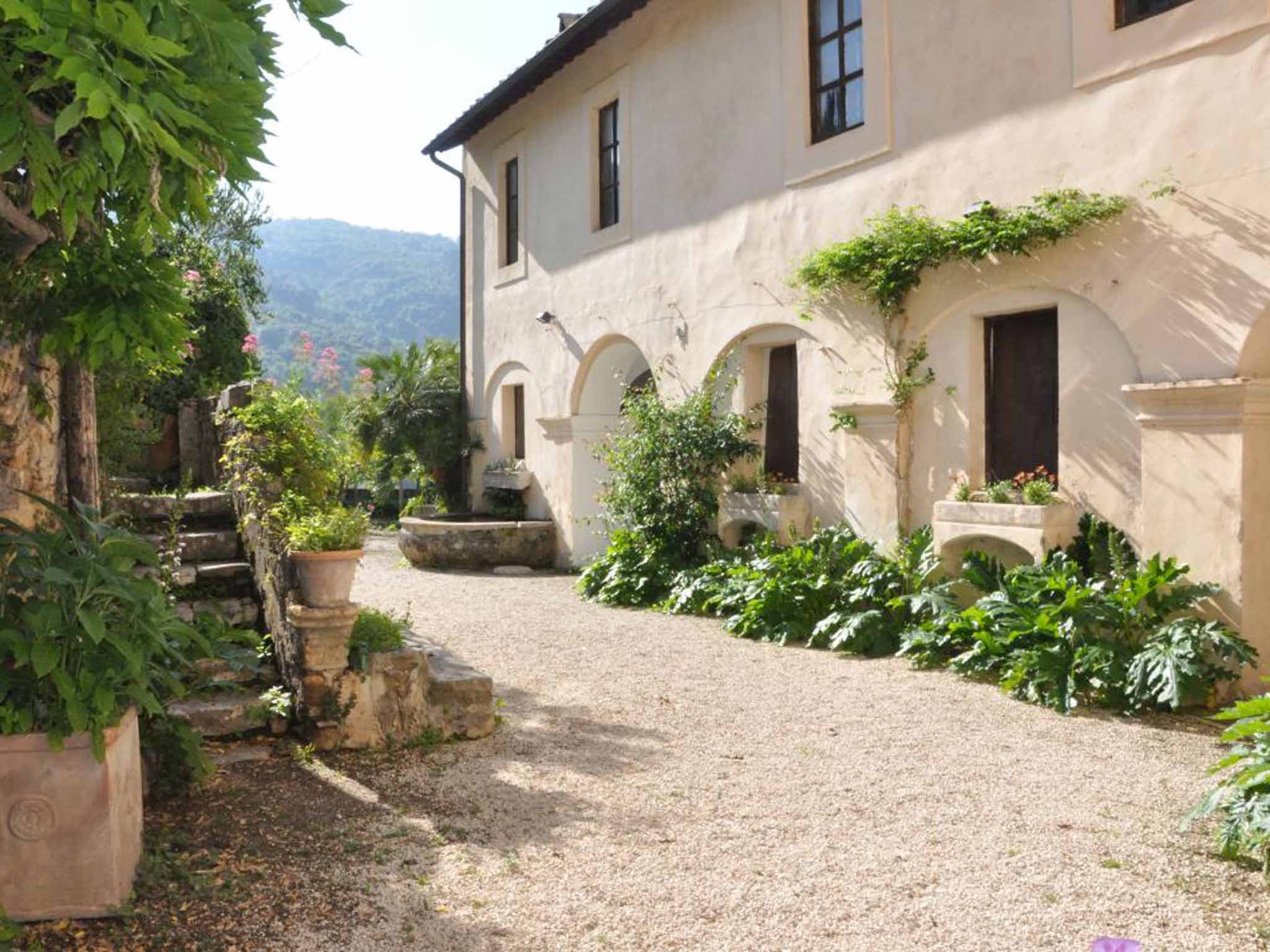Sant'Antonio, Tivoli, Italy - hotel review: A Renaissance gem that needs no hard cell
This villa with views over Tivoli is a former monastery and an ancient Roman home which Horace visited. So, too, did Duncan Garwood

An air of timeless calm hangs over Sant'Antonio. Set amid holm oaks, olive trees and spindly cypresses, on a hillside just outside Tivoli, this tastefully restored Renaissance monastery is a delightful spot to seek sanctuary for a few days.
The monastery was built in the late 1500s, but its origins date back to the first century BC when it started life as an ancient Roman villa; according to local lore, the poet Horace was a frequent guest. These days, it's one of six Italian properties managed by the Landmark Trust, a charity whose work to salvage historic buildings currently features in the Channel 4 series, Restoring Britain's Landmarks.
Like all Landmark buildings, it retains much of its original look. That means a bare, unadorned exterior giving on to an austere interior of whitewashed walls, wood-beamed ceilings and terracotta brick floors. Small casement windows offer stirring views over to a thundering waterfall and Tivoli's historic centre on the far side of a wooded gorge.
The house makes an ideal retreat, and with mod cons conspicuous by their absence – there are no televisions and no wi-fi – you can't help but slow down and enjoy the surroundings. But when the mood to explore hits, then you're perfectly placed.
The rooms
Spread over two floors, the house's spacious guest quarters sleep up to 12 people in six bedrooms, with four bathrooms. The entrance opens on to the upper floor and a long, echoing hallway. Low doorways lead off to bedrooms in the monks' former cells. These are uncluttered and furnished in simple monastic style with dark wood shutters, heavy chests, antique writing desks, and rugs on the bare tiled floors.
At the end of the hall, a suite of three sitting rooms provides a cosy space with comfortable, lived-in armchairs, an open fireplace, and a wonderfully eccentric collection of vintage books. Worn stone stairs lead down to the lower floor where you'll find more bedrooms, a large country house kitchen, and, beyond that, a vaulted refectory with a long communal table at its centre. Also accessible from down here is the lush, landscaped garden and a panoramic arcaded loggia, ideal for al fresco dining.
Decor in the house largely consists of historical and religious knick-knacks – paintings, framed prints, reliquaries, copper braziers – but look closer and you can still make out traces of the original Roman villa. These include a patch of mosaic floor in a downstairs bedroom, and, more spectacularly, a towering grotto hidden in the lower garden – ask the super-helpful housekeeper, Maria, or her husband, Enrico, to show you.
Out and about
Visible from the house, the Grande Cascata (waterfall) is the highlight of the Parco Villa Gregoriana (00 39 0774 332650; visitfai.it/parcovillagregoriana), a glorious natural park set in a giant chasm at the foot of Tivoli's historic centre. Just a short walk away, you'll find the Unesco-listed Villa d'Este (00 39 0774 332920; villadestetivoli.info) with its beautiful Renaissance gardens and a series of extravagant fountains. Just outside Tivoli, Villa Adriana (00 39 0774 530203; villaadriana.beniculturali.it) is another World Heritage Site. The extensive ruins of Hadrian's vast second-century estate are quite magnificent, easily on a par with the ancient monuments on show in Rome, some 20 miles to the west.
Also worth searching out is the small town of Palestrina, home to the charming Museo Archeologico Nazionale di Palestrina (00 39 06 953 81 00), and Subiaco, the remote town where St Benedict spent three years holed up in a cave before founding the Benedictine order. The cave is now incorporated into the spectacularly sited Monastero di San Benedetto (00 39 0774 85039; benedettini-subiaco.org).
The food and drink
Apart from tea and coffee, you'll need to bring all your own provisions. There are plenty of food shops in Tivoli and you can stock up on fruit and vegetables at the market on Piazza del Plebiscito. Also on the piazza, Vapoforno Plebiscito (00 39 0774 311323) is a friendly, casual restaurant serving everything from pastries and sliced pizza to salads and fresh pastas.
Nearby, on Via della Sibilla, the rather more formal Sibilla (00 39 0774 335 281; ristorantesibilla.com) is a local institution, offering sophisticated regional fare and a romantic setting by the Tempio di Vesta.
If you want to stay in but don't fancy cooking, Maria is happy to do the honours: for €25 (£18) she'll rustle up a traditional Italian dinner, comprising an aperitif, pasta, main course, two side dishes, dessert and fruit.
The essentials
Sant'Antonio, Tivoli, Italy. A three-day rental costs from £587 through the Landmark Trust (01628 825925; landmarktrust.org.uk). Four- and seven-night stays are also available
Subscribe to Independent Premium to bookmark this article
Want to bookmark your favourite articles and stories to read or reference later? Start your Independent Premium subscription today.

Join our commenting forum
Join thought-provoking conversations, follow other Independent readers and see their replies